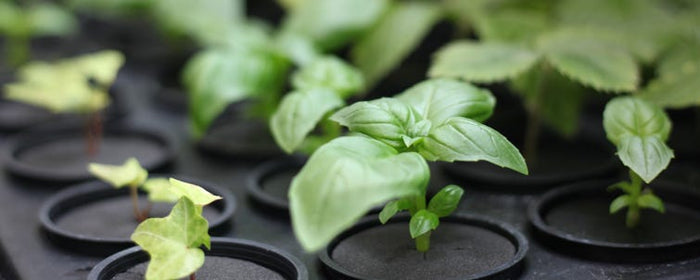![[Overwintering] How to Save Plant Genetics (Part 3 of 3)](http://www.growell.co.uk/cdn/shop/articles/overwintering-how-to-save-plant-genetics-part-3-of-3.jpg?v=1673371457&width=1100)
[Overwintering] How to Save Plant Genetics (Part 3 of 3)
When you've missed the chance to take cuttings, don't panic! You can still save your plant's genetics.
There are 3 ways to do it.
Part 1: Stratification
Part 2: Clone in Flowering
Part 3: Overwintering (this article)
You're reading part 3 of a 3 part series. Here you'll learn how to overwinter your plants. It's by far the most drastic method.
What's Overwintering?
It's where you recreate winter to restart your cycle.
Plants totally shut down and get ready for spring (veg growth). This means you get another chance to take cuttings in veg.
The whole thing's just brutal. It's really not for the faint-hearted.
You have to hack at your plant 'til there's only a small bit of stem left. This'll help them conserve energy.
The good news is that overwintered plants already have an established rootzone. When spring arrives (veg growth), they have a head start and often produce a bigger yield! Some growers actually deliberately put plants through 2 or 3 cycles!
Why Overwinter?
Overwintering is drastic and risky. It's what you do as a last resort.
Imagine you had a nasty, unexpected bug invasion that ravished all fruit and flowers. You'd have no seeds to start a new crop, and it'd be too late to take cuttings.
There's only one hail mary way to save your genetics - to overwinter.
While you're at it, you may aswell try to save the cuttings.
How To Overwinter
Overwintering is very stressfull for plants. There's a good chance it'll fail and plants will die...we can't say it enough - overwintering really is a last resort.
Don't say we didn't warn you.
If you're brave enough to try this, pick the strongest, healthiest plants - they're the ones most likely to survive.
Step 1:
Start hacking. And be brutal
It's soul destroying, but it's what you've got to do.
Step 2:
The idea is to make your plant as small as possible to conserve energy.
Don't forget to save the cuttings.
Step 3:
By the time you're done, you should only have around 10 - 15cm of the main stem left.
Do. Not. Hold. Back.
Step 4:
You may need to repot into fresh compost. If your plant's a biggun, trim roots and move to a smaller pot to conserve energy.
Don't forget, overwintering is already very stressful. Think carefully before adding the pain of repotting.
Step 5:
After cutting back and repotting, add a stress reliever, like SuperThrive.
Anything that'll reduce stress and help prevent shock is worth a shot!
Step 6:
Move your plant to somewhere fairly warm, where the cold won't be a threat. Some people cover plants in bubble wrap.
Aftercare
Once your plant's in a dormant state, you'll want to leave it this way for at least a few weeks. This'll give it a chance to recover from the stress of being cut back.
You won't need to feed your plant as much, as often - there's nothing to it! Maybe every 2 - 3 weeks.
If your plant looks dead, don't be alarmed - this is normal - just be patient. Even when you start vegging your plant, it'll take a few weeks before it starts to come back to life.
When ready to veg, you can reintroduce your lighting cycle. Gradually increasing the 'on' time by an hour a day. Start from 8 hours until you reach a full 18hr veg cycle. If successful, within a few days you'll see new growth.
What's Next?
Once you start hacking at your plant, it's too late to go back.
So before you start shearing, try these other methods:
Part 1: Stratification
Part 2: Clone in Flowering










